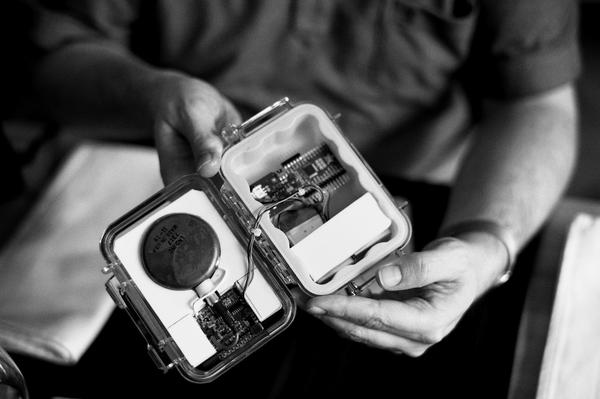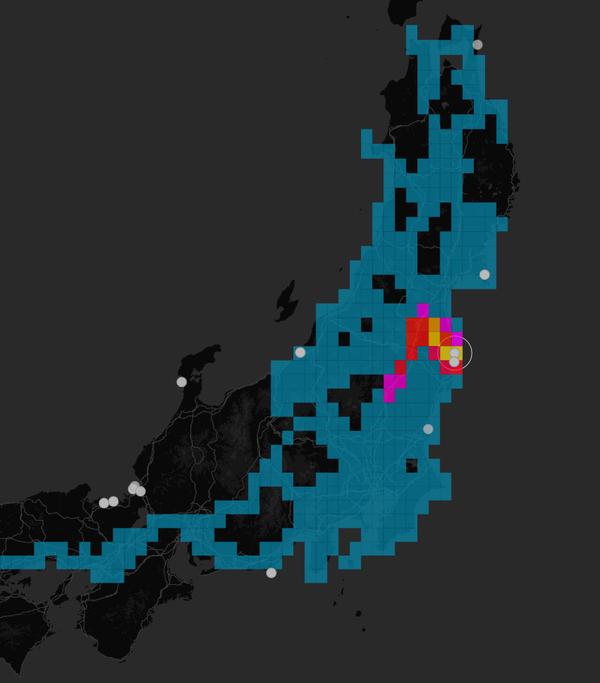"We Bring Radioactivity Data to The Japanese Public"

Robin on his bike in Tokyo with Safecast on his bag.
Fukushima: EPFL hactivist empowers the public to participate in gathering radiation fallout data.
While in Japan, Robin Scheibler has been active in a Do-it-yourself computer engineering space called Hackerspace Tokyo. These scruffy engineers looking for bottom-up answers are the hands and minds behind a public initiative to record and communicate radioactivity levels in Japan following the Fukushima disaster called Safecast. Starting a PhD fellowship at the School of Computer and Communication Sciences (IC) this coming semester, Robin has been living in Japan for the last couple of years following an initial exchange semester in 2007. We spoke to Robin in Japan before he returns to Switzerland to give a conference at the NCCR MICS final event here at EPFL on September 5th.
How did you get involved in a public initiative to share radiation data in Japan?
In March of 2011, after the Fukushima reactor fallout, everyone in Japan was asking themselves how they could help. A small group of us at Hackerspace in Tokyo realized that we would better serve the public interest by making something useful, rather than hauling debris around.
So you decided to make a portable Geiger-counter?
At Hackerspace, we combined our electronics skills with our passion for DIY and liberty of information—the first prototype was ready to go after less than one week of work. We now lend out DIY portable Geiger-counters and then post the data online.

Why is liberty of information important for you?
More data is always better than less data. Empowering people to take their own readings was a reaction to the outstanding lack of transparency. The electrical company who runs the plant (TEPCO) and the Japanese government were the only two entities reporting on the radioactivity levels and the data was limited and often too old. There was a general feeling that they were hiding something.

So, how are the radioactivity levels collected with your device?
We lend our device, called a bGeigie, to volunteers. It’s a self-contained, waterproof box with a Geiger-counter and a GPS. We originally designed it for cars—it can easily strap onto to the passenger window—but people can also take readings at home or riding a bike—like me! The bGeigie takes level readings with geographical coordinates and records the information on a standard SD card. Then users upload this information to our website and we make this data available for all.
Has this hactivism—if that’s what you would call it—raised any eyebrows in Japan?
Yes, it is a sort of hactivism. And the authorities have never publicly mentioned Safecast. But they have, on three occasions, published data directly after we published similar data sets. This could be a coincidence, but in any case it allowed us to compare our data with theirs, and more data is always better data. In any case, the public is much better informed than before we started Safecast, that’s the important thing.